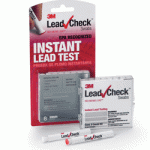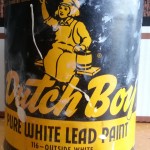THIS INFORMATION IS PROVIDED AS A COURTESY. THE HOME INSPECTION WILL NOT TEST FOR LEAD PAINT OR OTHER ENVIRONMENTAL HAZARDS.
IN THE NEWS
Amazingly, regulations do NOT currently apply to demolition. See links below.
Oregon Public Broadcasting Article
WHEN WAS LEAD PAINT USED?
Up until the late 1970′s lead was widely used as a paint additive to yield specific colors and increase the overall quality of the paint. In the US, the use of significant amounts of lead as an additive in paint was banned from residential use by the CPSC in 1977. Keep in mind that old stock often continued to be used in the few years to follow.
SAFETY & COST CONCERNS
There is no safe level of lead content in the body. Inhaling or ingesting even small amounts of lead or lead containing materials poses a serious health risk, especially to children and pregnant women. Children can be inclined to eat paint chips because they actually taste sweet. I encourage doing further research to know what precautions are necessary. However, it’s also important to know that, when solidly encapsulated, the possibility of exposure (beyond normally occurring trace amounts) can be substantially reduced. It’s often safer to paint over lead paint than to attempt to remove it entirely.
Recent regulations in King County require contractors to meet more stringent requirements on job sites where lead paint is present or may be present. Surfaces that contain lead paint cannot be sanded or otherwise improperly handled. These regulations help further protect against exposure to lead. If you plan on remodeling, it’s worth noting that these requirements can have a marginal increase the cost.
TESTING
Testing for lead requires specialized equipment or invasive sampling and is not offered as part of a standard home inspection. If you are interested in having a home tested there are a few main options:
 Do-it-yourself lead test kits can help to confirm if lead is present in isolated surfaces if the instructions are closely followed. Due to a higher potential for inaccurate results, I do not recommend this method as a substitute for professional testing. At $5 to $10 per swab and the availability of multiple swab packs, the kits are much less expensive than the alternative of having an on-site professional lead inspection. One significant down side to these kits is that they require exposing and testing a section of of each individual paint layer. This can require practice and patience. These kits are also not recognized as an official evaluation by agencies like the EPA and HUD.
Do-it-yourself lead test kits can help to confirm if lead is present in isolated surfaces if the instructions are closely followed. Due to a higher potential for inaccurate results, I do not recommend this method as a substitute for professional testing. At $5 to $10 per swab and the availability of multiple swab packs, the kits are much less expensive than the alternative of having an on-site professional lead inspection. One significant down side to these kits is that they require exposing and testing a section of of each individual paint layer. This can require practice and patience. These kits are also not recognized as an official evaluation by agencies like the EPA and HUD.
Paint chip sample testing is an effective method of testing a given sample at a laboratory (see the “Service Providers” section below). This method does involve removing small samples of paint, usually from multiple locations throughout the home.
Professional on-site testing is a much more thorough examination of the home. This non-invasive testing uses a specialized XRF (X-ray fluorescence) scanner that does not require any damage to the wall surfaces. On-site lead inspections generally costs around $300 to $400 (see “Service Providers” section below).
SERVICE PROVIDERS
NVL Laboratories, Inc.
4708 Aurora Ave North, Seattle, WA
http://www.nvllabs.com
(206) 547-0100
Environix
12303 8th Ave NE, Seattle, WA
http://www.leadtestingseattle.com/lead-testing
(425) 563-6480
LINKS
More great FAQ and information can be found at these links:
EPA, Frequently Asked Questions Page
Please note that the information and resources provided here are intended only as a courtesy by Wil Harnecker and HAUS Inspection Services, LLC.. This information is not intended for use in making real-estate or other financial or health related decisions. Further research and due diligence is always recommended during all steps of the home buying and selling processes.

